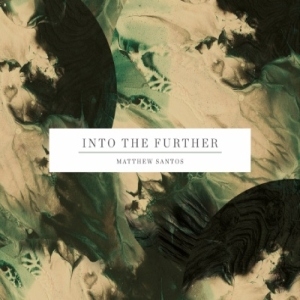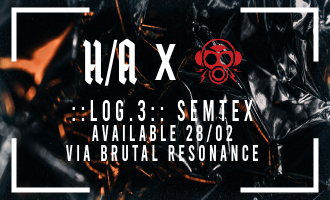Matthew Santos - Into the Further
Matthew Santos’ career path has been an unexpected one thus
far. When he was thrust into the spotlight in 2008 for lending his voice on
Lupe Fiasco’s breakout hip hop hit, “Superstar,” what followed was a media
circus the largely indie folk artist never anticipated. After two Grammy nominations, two full years or touring and
endless performances on various talk shows, the media quickly churned on to the
next big thing and by the end of 2008 Santos found himself with a lot of great
ideas from his foray into other genres but also, understandably, wanting only
to work solo.
Don’t let the freakishly hipster phrase “solo indie folk artist” scare you; Santos is not your typical bearded grumpypants falsetto one-trick pony like Bon Iver or Ryd. The infusion of jazz, opera and even beatboxing into Santos’ music makes quick work of any stereotypical notions, so chuck them. Beginning with 2010’s This Burning Ship of Fools, he wrote, produced and performed all the parts of his incredibly complex and sometimes weird indie folk concoctions. He began to get a more cult, and probably more lasting, following than he had when he partnered with Fiasco, largely because of his live shows. Alone onstage, he managed to perform all the parts of these complicated songs using a number of coordinated effects pedals, looping synths and his own mouth for the beatboxing. From what I hear it’s a pretty wild show.
Santos’ newest album Into the Further is a sort of journey of genres, bookended by experimental jazz. This is the first time since 2010 that the spotlight-shocked songwriter has worked with other artists, including a jazz trio and a full compliment of backing musicians when needed. The result is a different sort of sound for Santos, which is to say it’s a bit more conventional than some previous work. Into the Further starts with probably its best track, the title track which is short and largely instrumental but features Santos’ aptitude for complex composition in the form of Miles Davis-like jazz. This allows him to introduce his two new and very prolific band members: Chicago Jazz drumming legend Jon Deitemyer and electrified bassist Emma Huff. With their combined talent and Santos’ writing, this song really pops as an intro to what I’m sure he sees as a musical evolution.
“Ojos,” the second track on Into the Further, is also an instrumental track which features another surprising thing Santos is known for – beatboxing. It sadly is the only such track on the album but the combination of beautifully played folk and acoustic rock guitars and the beatbox is once again unexpected and interesting. It seems like such a contradiction to put these two media together, but Santos always makes it work. Ojos is doubly surprising in that it has so many extra musicians on it that the feeling is almost orchestral.
I think we could consider “Into the Further” and “Ojos” the preamble to the main part of this album, where, Santos goes more standard folk/rock on songs like “Under the Microscope,” “It All Works Out” and “White Gloves.” What’s most striking on these tracks is Santos’ quick, high-pitched balalaika-like guitar playing. This feature paired with the jazz backing on songs like “It All Works Out” makes for an interesting juxtaposition of sounds.
Another thing that features more heavily in the meat of this album is Santos’ vocals. Many modern folk artists like Bon Iver have mellow, falsettoed and kind of monotonic vocals. Santos’ vocals here by contrast are nuanced, powerful and show his vocal range. For comparison I would say Dave Matthews or Jeff Buckley would be similar vocally. The epically folk “Second Chances” is a great example on this album of Santos’ vocal work, but I would like to see it featured on one of his more funky and complex songs.
As Into the Further, meanders on, it starts to sound a bit samey; heavy on the folk but little else. This is possibly because of the high number of tracks on the record; I guess Santos felt he had a lot to say. Unfortunately by the end it gets a bit monotonous and you kind of start not caring. It is worth it to listen until the end, however, or to skip forward a few tracks. “End of the Pipeline” brings a sort of lounge jazz feel and lots of accompaniments. “And Now the Leap,” closes the album, and I think it’s meant to be a compliment to and continuation of the intro tracks; indicating an end to the cycle which gave birth to this album and to introduce the next phase for Santos.
Overall, Into the Further seems a little pedestrian for Matthew Santos, but he’s been going pretty hard with the wacky for a few years now. With his new compliment of backing musicians, I think he’s probably ramping up for something interesting. Santos has also embarked on a second, more experimental hip hop-style project, so it may be that his intention is to separate the indie folk and make it more singular, but it’s hard to say. Whatever does come from Santos in future we can be assured it will be well-composed, heartfelt and all his own.
Jun 09 2015
Don’t let the freakishly hipster phrase “solo indie folk artist” scare you; Santos is not your typical bearded grumpypants falsetto one-trick pony like Bon Iver or Ryd. The infusion of jazz, opera and even beatboxing into Santos’ music makes quick work of any stereotypical notions, so chuck them. Beginning with 2010’s This Burning Ship of Fools, he wrote, produced and performed all the parts of his incredibly complex and sometimes weird indie folk concoctions. He began to get a more cult, and probably more lasting, following than he had when he partnered with Fiasco, largely because of his live shows. Alone onstage, he managed to perform all the parts of these complicated songs using a number of coordinated effects pedals, looping synths and his own mouth for the beatboxing. From what I hear it’s a pretty wild show.
Santos’ newest album Into the Further is a sort of journey of genres, bookended by experimental jazz. This is the first time since 2010 that the spotlight-shocked songwriter has worked with other artists, including a jazz trio and a full compliment of backing musicians when needed. The result is a different sort of sound for Santos, which is to say it’s a bit more conventional than some previous work. Into the Further starts with probably its best track, the title track which is short and largely instrumental but features Santos’ aptitude for complex composition in the form of Miles Davis-like jazz. This allows him to introduce his two new and very prolific band members: Chicago Jazz drumming legend Jon Deitemyer and electrified bassist Emma Huff. With their combined talent and Santos’ writing, this song really pops as an intro to what I’m sure he sees as a musical evolution.
“Ojos,” the second track on Into the Further, is also an instrumental track which features another surprising thing Santos is known for – beatboxing. It sadly is the only such track on the album but the combination of beautifully played folk and acoustic rock guitars and the beatbox is once again unexpected and interesting. It seems like such a contradiction to put these two media together, but Santos always makes it work. Ojos is doubly surprising in that it has so many extra musicians on it that the feeling is almost orchestral.
I think we could consider “Into the Further” and “Ojos” the preamble to the main part of this album, where, Santos goes more standard folk/rock on songs like “Under the Microscope,” “It All Works Out” and “White Gloves.” What’s most striking on these tracks is Santos’ quick, high-pitched balalaika-like guitar playing. This feature paired with the jazz backing on songs like “It All Works Out” makes for an interesting juxtaposition of sounds.
Another thing that features more heavily in the meat of this album is Santos’ vocals. Many modern folk artists like Bon Iver have mellow, falsettoed and kind of monotonic vocals. Santos’ vocals here by contrast are nuanced, powerful and show his vocal range. For comparison I would say Dave Matthews or Jeff Buckley would be similar vocally. The epically folk “Second Chances” is a great example on this album of Santos’ vocal work, but I would like to see it featured on one of his more funky and complex songs.
As Into the Further, meanders on, it starts to sound a bit samey; heavy on the folk but little else. This is possibly because of the high number of tracks on the record; I guess Santos felt he had a lot to say. Unfortunately by the end it gets a bit monotonous and you kind of start not caring. It is worth it to listen until the end, however, or to skip forward a few tracks. “End of the Pipeline” brings a sort of lounge jazz feel and lots of accompaniments. “And Now the Leap,” closes the album, and I think it’s meant to be a compliment to and continuation of the intro tracks; indicating an end to the cycle which gave birth to this album and to introduce the next phase for Santos.
Overall, Into the Further seems a little pedestrian for Matthew Santos, but he’s been going pretty hard with the wacky for a few years now. With his new compliment of backing musicians, I think he’s probably ramping up for something interesting. Santos has also embarked on a second, more experimental hip hop-style project, so it may be that his intention is to separate the indie folk and make it more singular, but it’s hard to say. Whatever does come from Santos in future we can be assured it will be well-composed, heartfelt and all his own.
Jun 09 2015
Off label
Official release released by the artist themselves without the backing of a label.
Share this review
Facebook
Twitter
Google+
Shares
Buy this release
Matthew Santos Store
Him - Love Metal Archives Vol.1 is available at POPONAUT from 14,95€
Related articles
51 Peg - 'A\Version'
Review, May 21 2023
Various Artists - 'Portraits of Serial Killers Volume 2'
Review, Feb 16 2014
Emmon - 'Nomme'
Review, Jul 13 2011
Project Pitchfork - 'Continuum Ride'
Review, Jul 23 2010
Absolute Valentine
Interview, Apr 13 2019





